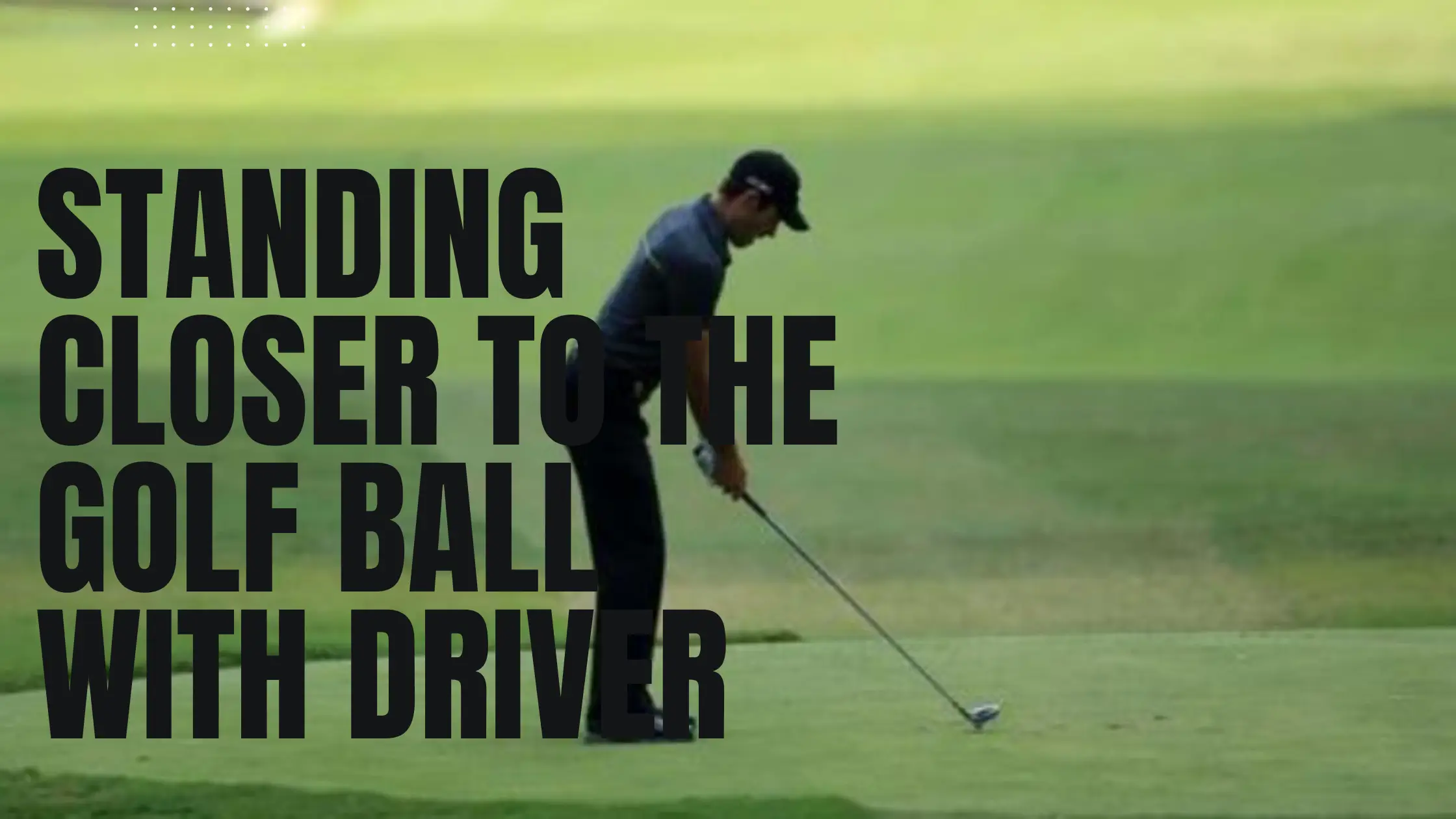Benefits of Standing Closer to the Golf Ball with Driver
For many amateur golfers, tee shots with the driver are the most challenging and intimidating shots in the game. Getting off to a poor start by hitting a wayward drive places immediate pressure on every other aspect of your game for the rest of the hole. However, making a solid drive can set an encouraging tone and make a hole feel conquerable from the start.
One key adjustment that can provide almost instant benefits for struggling drivers of the golf ball is to modify stance distance in order to stand closer to the ball when setting up. Stand closer to the ball with driver might sound counterintuitive to some at first. Conventional wisdom for decades emphasized utilizing a wide stance and positioning oneself farther from the ball to allow for a sweeping outside-in swing path for maximum power.
However, modern advances in both teaching techniques and driver technology now have game’s top instructors advocating a more centered, balanced setup with the driver. The legs should be positioned under the shoulders, weight distributed evenly, and the ball moved forward in the stance closer to the lead foot.
Key Benefits of Standing Closer to the Golf Ball with Driver
Promotes Desired Club Path
The farther away one stands from the ball with driver, the more upright the backswing will become. This frequently leads to the clubhead being too steep on the downswing, resulting in slices, pulls, tops, and fat shots caused by striking the ground well before impacting the ball.
Standing closer helps produce the ideal inside-out club path for powerful draws/hooks that maximize distance with the driver’s low loft and curved face design. With the ball forward, the swing arc will naturally become flatter. Your arms and upper body gain more room for rotation. This allows the clubhead to travel more on an inside-to-out attack angle through impact rather than outside-in.
Improves Consistent Ball-First Contact
Driver mishits commonly occur due to tilted spines, swaying, sliding, dipping, and lunging caused by an off-balance stance. These faults lead to misaligned contact between the clubface and ball, resulting in loss of distance and accuracy.
Positioning yourself closer to the golf ball helps remove many opportunities for imbalance. With feet positioned below your shoulders and weight centered, compensating motions needed to reach the ball are eliminated. This consistency translates into greatly increased chances of striking the ball before turf.
Maximizes Potential for Power Transfer
Every effective golf swing requires the proper sequence of events to transfer maximum power from the swing’s kinetic chain to the ball at impact. This sequence is thrown off when the body must reach and lunge to make contact from too far away. Energy leaks out elsewhere, decelerating clubhead speed long before contact.
Rotating around a fixed axis with the ball and club in front creates optimal timing for accelerating the driver into the back of the ball. Standing closer allows the arms and club to swing more vertically on the desired plane angle instead of having to re-route due to setup being off-axis. This allows for consistently powerful strikes.
Determining Optimal Stance Distance
Finding the optimal position to stand relative to the ball before addressing it with the driver is an individualized process requiring some self-experimentation and analysis according to physical dimensions and current setup tendencies.
There are a few general guidelines that apply to all golfers when formulating the ideal location to situate total body alignment prior to firing a tee shot with the big stick.
Use Club Length as Baseline
The right stance distance from the ball can be approximated using the length of your driver as a measuring stick. While lengths vary slightly based on aftermarket alternative shafts, standard drivers measure roughly 43 to 44 inches from the grip butt to the sole of the clubhead.
As a starting point to be tweaked from, align your body close enough to the ball so the clubhead will reach the ball by extending it toward the target. For most golfers, this equates to starting with feet positioned just inside shoulder width.
Factor Arm Length & Width
The ideal stance distance from the ball hinges greatly upon physical sizes and proportions. Namely, arm length relative to both height and shoulder width needs accounting for.
Golfers with longer arms can typically stand a touch farther away than those with shorter arms. Narrower shoulders require closing the stance a bit more than wider-shouldered players as well. These factors ensure the arms don’t have to reach, over-rotate or under-rotate to attain proper geometry positioned behind the ball.
Consider Weight Shift Tendencies
Ideally when driving the ball, power should be generated through equal measures of hip and upper torso rotation while keeping the head steady. However, most players tend to either sway laterally or need to slide their lower body to create sufficient force.
If your misses tend to spread across the face and dispersion pattern, you likely have trouble maintaining posture resulting from an improper stance distance. Standing closer or farther will provide feedback about optimal power sequencing through enhanced balance.
Proper Setup at Address
When attempting full shots from the tee box rather than chipping or punching, every piece of setup consistency saves strokes. Verifying factors like grip, posture, alignment, and ball position does no good if stance distance and weight distribution are off.
Here is a quick checklist to run through once you have gauged an appropriate location to stand relative to the ball after considering club/arm length and personal movement tendencies:
- Feet positioned under shoulders, hip width apart
- Knees lightly flexed
- Spine tilt forward from mid back to parallel
- Arms hanging relaxed, clubface square
- Weight balanced evenly side to side
- Eyes focused few inches in front of ball
Following this protocol positions your body to swing most efficiently with the driver from any lies. Make normal adjustments from this baseline when needed to adapt setup to uneven lies.
Troubleshooting Common Errors
Implementing major setup changes often exacerbates existing problems before improvement emerges. This causes many golfers to give up quickly on modifications that require adjustment periods to ingrain new motor patterns.
Here are some common mishits that occur when transitioning to standing closer the ball with driver and simple fixes:
Pulls & Hooks
Cause – Arms stuck behind torso turn or releasing clubhead
Fix – Let arms fully extend at impact, don’t flip
Thin Strikes
Cause – Posture loss, dipping forward
Fix – Maintain spine tilt away from ball with level head
Fat Strikes
Cause – Swaying backward
Fix – Keep lower body still, transfer weight internally
Slices
Cause – Shoulder aim too open
Fix – Align shoulders square, delay release
Conclusion
If lack of consistency and max distance with your tee shots is holding your scoring potential back, moving closer to the ball when driving can provide an instant performance booster. This adjustment aligns your body to make solid ball contact more repeatable while also enabling maximum power transfer into shots.
Remember to begin the transition using your trusted club length as a guide, then tweak foot position based on arm length and tendency to sway or slide during the swing. Setting up with this stance distance checklist eliminates extra motion and distracting mechanics:
- Feet under shoulders
- Knees flexed
- Spine tilted
- Weight balanced
- Eyes forward
By learning to stand closer to the ball with driver, you can eliminate tension, play more confidently, watch drives fly straighter and farther, and start attacking courses from the first shot instead of playing catch-up golf.







